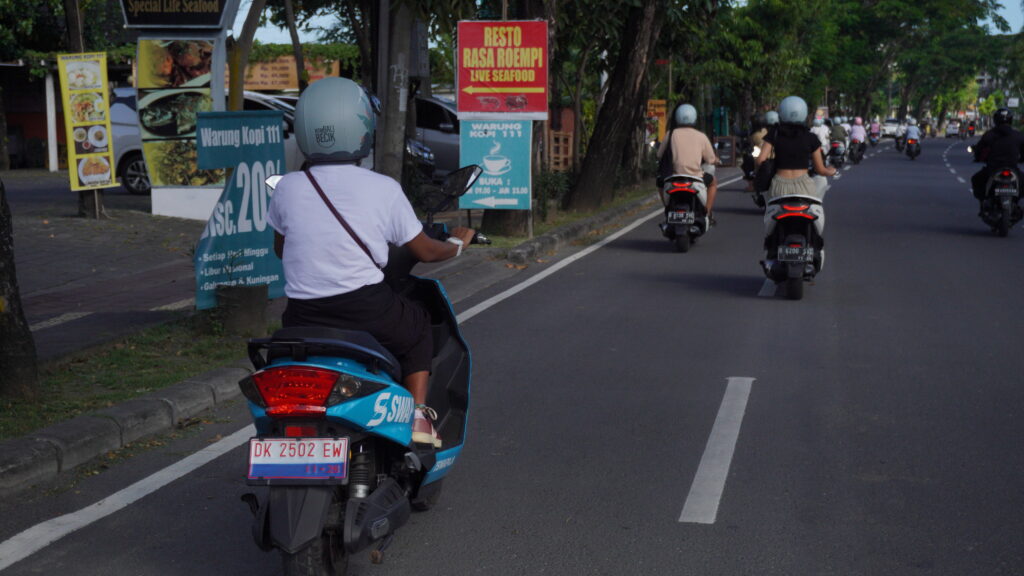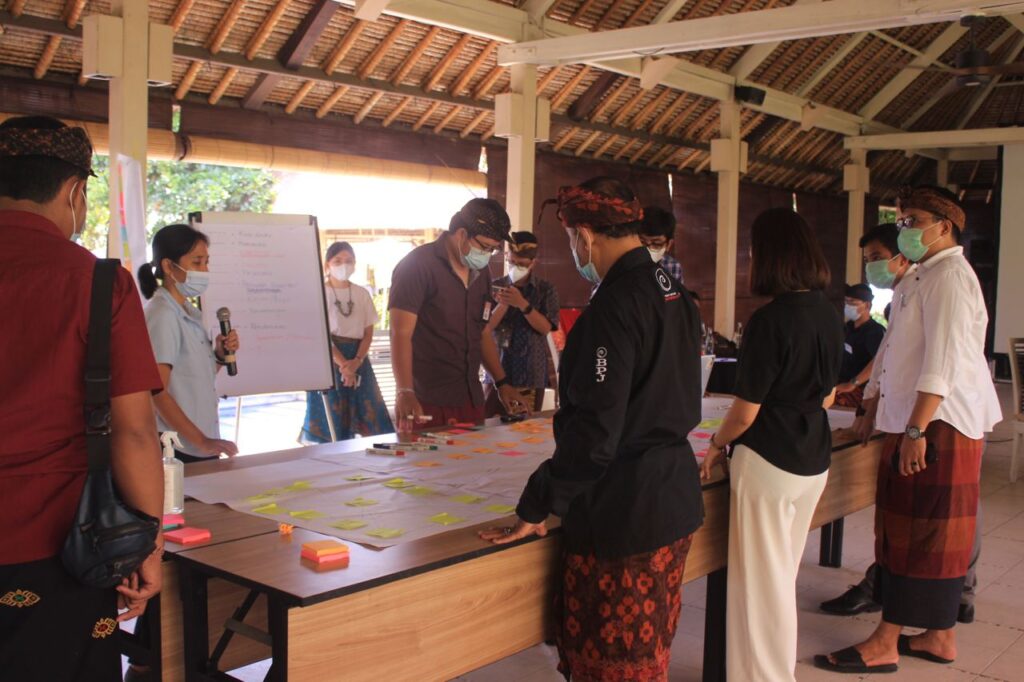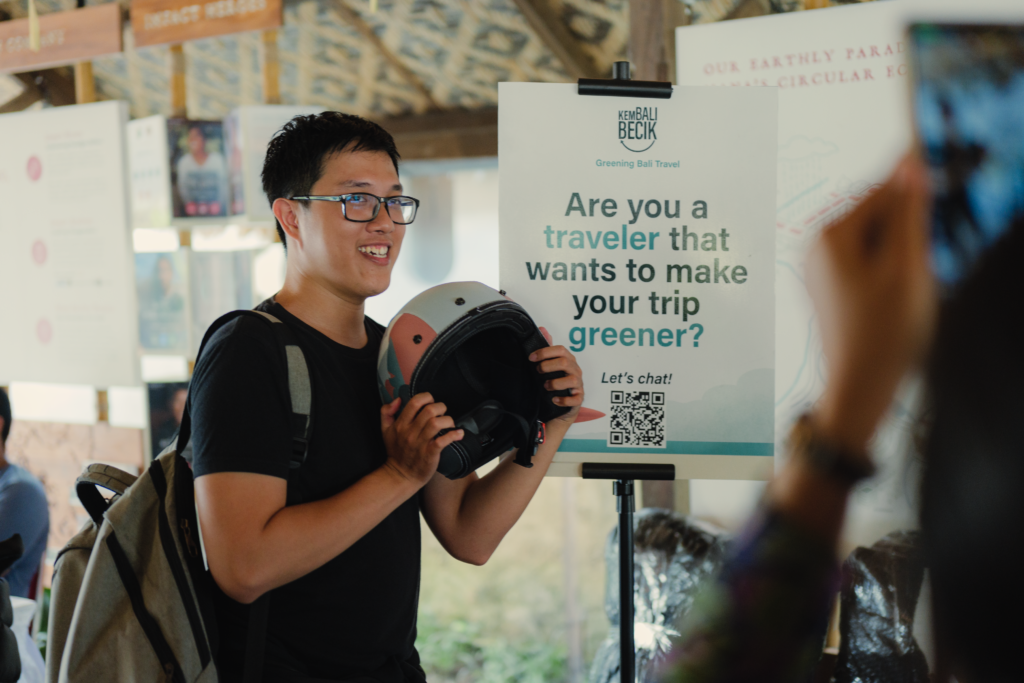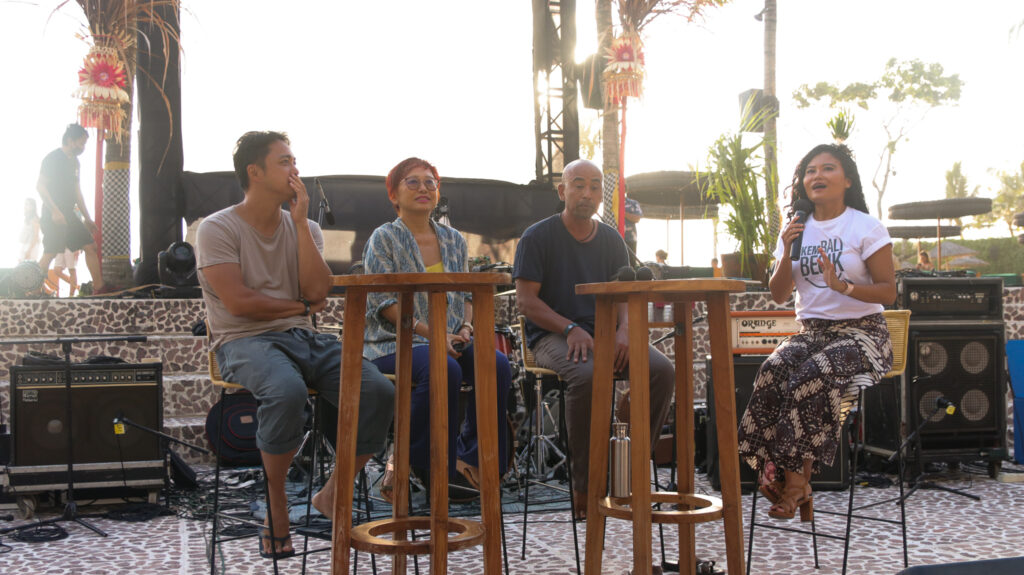Bali’s Path to Low-Carbon Mobility: Insights and Opportunities
março 13, 2023
Despite being the most recognized tourist destination in Indonesia and receiving steady revenue growth from the tourism industry, the island province of Bali lacks public transportation infrastructure to support its economic and social activities. Consequently, residents and visitors alike rely heavily on private vehicles (cars and motorcycles) as the primary means of mobility.
While efforts to develop a comprehensive mass transit system need to continue, there is a need to transition Bali’s combustion engine vehicles to a cleaner, lower-carbon option. Before the pandemic, Bali saw a 6% increase in motor vehicle ownership every year. In this trajectory, it will continue to build up carbon emissions and is likely to face air pollution problems in the near future.

Bali lacks public transportation infrastructure to support its economic and social activities. Consequently, residents and visitors alike rely heavily on private vehicles (cars and motorcycles) as the primary means of mobility.
In September 2020, the Bali government passed regional regulation number 9 titled the General Regional Energy Plan (RUED), which follows gubernatorial regulations number 45 and number 48 of 2019. These policies provide a directive for the development of policy and technical infrastructure to transition to renewable energy and the utilization of electric vehicles (EVs) in Bali. These policy instruments indicate a political will for clean transportation in Bali and present an opportunity for actions that can enable the successful transition and acceleration of EV adoption on the island.
In response to this, Purpose Climate Lab, in collaboration with local stakeholders conducted a series of research to identify opportunities for intervention that can help realize Bali’s ambition to implement low-carbon mobility.
Landscape Analysis: Identifying Opportunities for Change

Government stakeholders in a focus group discussion analyzing the current EV ecosystem in Bali
In collaboration with World Resources Institute Indonesia, our first research project aimed to assist Bali’s Transportation Department (Dishub Bali) in analyzing the electric vehicle (EV) ecosystem in Bali. This involved conducting a series of research endeavors, including Social Network Analysis to examine the relationships among actors in the EV industry, Choice Modelling to evaluate the potential impacts of various policy interventions, and Total Cost of Ownership analysis to compare the costs of electric and conventional vehicles. The ultimate goal of this research was to assess the potential policy outcomes and benefits of EVs in Bali.
Three key insights from the studies include:
- The top two factors that can boost the adoption of EVs are purchase subsidies and accessibility of charging infrastructure.
- EV policy may reduce up to 1.9 million kilograms of CO2 emissions annually, which equals 32,668 tree seedlings grown for ten years or 84,065 trash bags of waste recycled instead of landfilled.
- Certain types of electric two-wheelers already have a lower total cost of ownership than conventional gas-powered vehicles. Due to the massiveness of the number of two-wheelers in the region, pushing for a transition to electric two-wheelers can yield a significant impact on emission reduction.
Message Testing: How can we drive public demand for low-carbon mobility?

To deepen our understanding of how to mobilize demand for low-carbon mobility, we conducted a message test, to see how different narratives and messengers attract interest and influence public opinion on electric vehicles. We produce three short videos for the Transportation Department, starring prominent Balinese cultural voices, such as Ayu Laksmi and Robi Navicula. The videos were targeted at the entire population of Bali and were played over 2 million times. From this message testing, we found that the most dominant opinions include:
- Cultural framing and visuals around EV receive the most views and engagement. This is an indication that religious/cultural principles (such as Tri Hita Karana) are one of the strongest factors that influence how people process information.
- Basic understanding of EVs needs to be improved. We found many questions about reliability and safety (e.g. What if it ran out of battery and no charging station? What if it got rained on? How much do we pay for electricity?) – demonstrating the need to educate the public on this.
- Some people have strongly noted that the transition to EVs must go together with the transition to clean energy, as they feel that the emission impact will be small if the electricity that charges the EV still comes from coal.
Public Perception Poll: Where does the public currently stand?

Finally, Purpose also collaborated with Udayana University to do a public perception survey on green recovery, particularly on renewable energy, electric vehicles, and sustainable tourism. We surveyed 800 respondents in the Sarbagita (Denpasar, Badung, Gianyar, Tabanan) region and found the following key insights:
- 94% of respondents are in favor of electric vehicles, but economic and public health recovery remain the top issue priorities.
- Cost and availability of charging infrastructure are the two main factors in the decision to purchase an electric vehicle — consistent with the choice modeling study above
- 63% of respondents agree that economic growth must be balanced with environmental preservation
Summing Up: What does Bali need to realize low-carbon mobility?
Our main takeaway from these explorations is that realizing low-carbon mobility in Bali requires collaboration and synergy from multiple stakeholders. There is a need for awareness-raising efforts for consumers, infrastructural synergy among the private sector actors, and policy intervention from the government, among others.
These insights are supplied to the government, private sector, and civil society stakeholders through a series of convenings and engagements that aim to inform as well as inspire synergized actions to promote green recovery post-pandemic. We also communicated these, along with other research works done by the World Resources Institute, to the Bali Transportation Department, so that they can inform the development of Bali’s EV acceleration Action Plan (Rencana Aksi Daerah) which is launched in January 2023. The Action Plan outlines targets and strategies across 5 areas — management, infrastructure, industry and battery, human resources, and marketing and communication — with the goal of electrifying mobility in Bali.
We also used these findings to inform the development of a collaborative campaign called KemBali Becik — a combination of the Indonesian word kembali which means ‘to return’ and the Balinese word becik which means ‘good’. It is a collaborative campaign that aims to mobilize industry actors (tourism businesses) and consumers (travelers) to demand for green recovery, specifically through the promotion of climate solutions in Bali’s biggest economy: the tourism industry. By connecting conscious businesses with conscious consumers, the campaign hopes to strengthen the sustainable tourism ecosystem that can contribute to the acceleration and realization of low-carbon mobility and renewable energy in Bali.
To learn more about KemBali Becik, visit the website or follow the campaign on Instagram.
Um guia digital de combate à desinformação.